British Tanks
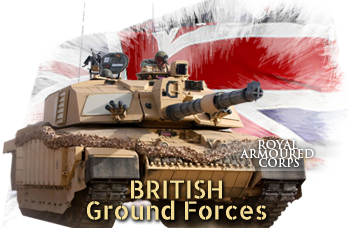
- Challenger 2 MBT
- Ajax IFV
- Ares APC
- FV430 Mk.3 Bulldog
- BAE AS-90
- FP Ocelot
- Mastiff
- Ridgeback
- Wolfhound
- Jackal
- Coyote
- Foxhound
- Husky
- RWMIK Land Rover
- BAE Stormer
- Trojan
- Titan
- CRARRV
- Terrier
- Alvis Unipower
The post-1990 era: New challenges.
Like other NATO members, UK saw the end of the Soviet empire and dislocation of the Warsaw pact as a benediction (on political view) and a curse (on army staff view) since with the disappearance of a conventional war threat, budget cuts would further curtail the ground forces program, perhaps as those that hit the Royal Navy hard. Nevertheless, it coincided with the introduction of the latest main battle tank, the Challenger 2. This crown jewel shares a very few parts despite obvious similarities with the Challenger 1, now retired from service. New important AFVs joined the fray like the BAE AS.90 Braveheart SPG (1992), the Alvis FV 510 Warrior Infantry Fighting Vehicle (1988) production was already in full swing (780+ delivered), and the Alvis/BAE Stormer specialized vehicle series (1990) was also being introduced.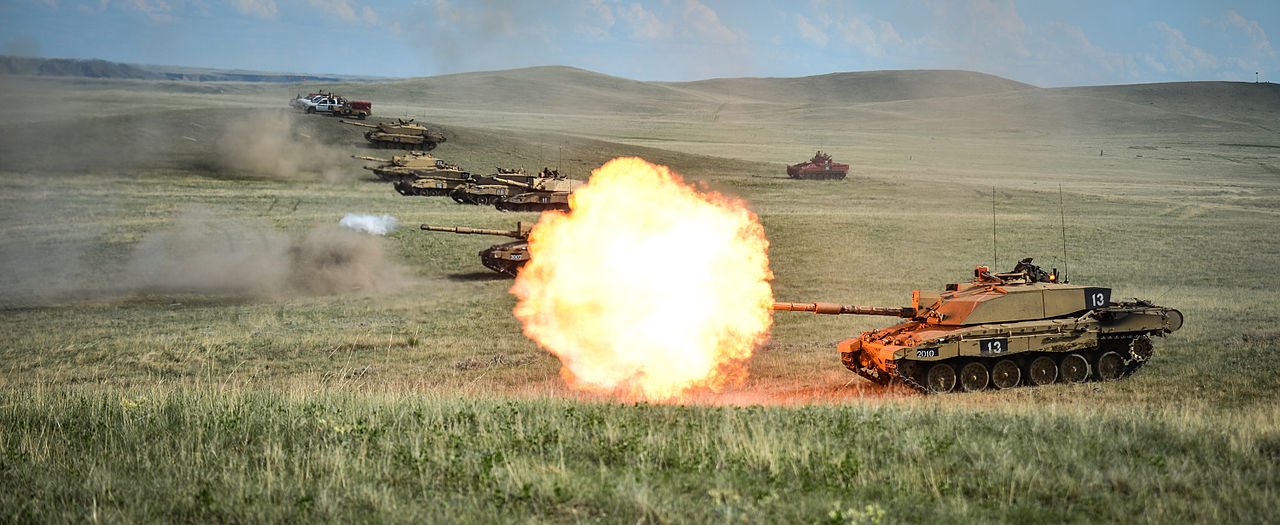 Challenger 2 in BATUS firing training exercise in Canada.
Challenger 2 in BATUS firing training exercise in Canada.
The 1st Gulf War: Operation Granby
The first large conventional war for many European nations since ww2 came not from the ex-USSR, now collapsed, but Iraq. The press will rapidly turn it as the "fourth world's largest army", to boost sales. Indeed on the paper, both in the number of men under arms and tanks or all types, it was quite impressive and well experienced by ten years of war with Iran. Fearing to be embroiled in a long protracted war, General Schwarzkopf at the head of the coalition defined a masterfully planned deception, and the ground assault came long after the air war, to get supremacy in the air. A large percentage of Iraqi forces were destroyed this way, however Operation desert saber (the ground assault phase of Desert storm) saw the British Armoured forces committed in full force since ww2 or the 1956 Suez crisis: The entire 1st armoured division was deployed on the breach zone, west of the supposed attack direction, together with the US "armoured fist" formed by the 1st and 3rd US Armoured division, the "big red one" (1st Infantry Division), 1st US cavalry division, 2nd US armored cav regiment, which formed the VIIth corps.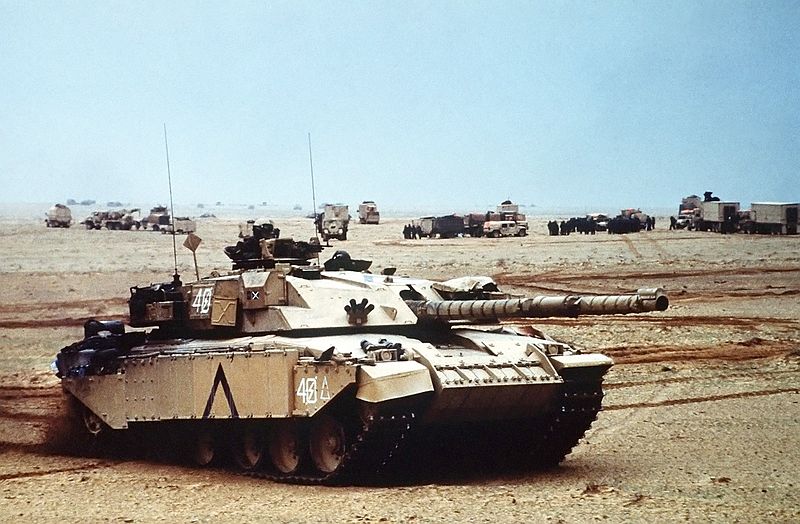
Challenger 1 ODS (tropicalized) of the Royal Scots Dragons, Iraq, 1991.
UK had the honor to make the opening for the ground assault phase, with the British Special Air Service's B squadron making an advance recon mission and surgical strikes. Later one, the thrust of the 1st British Armoured division was faultless and lightning fast, completely cutting off Iraqi Forces stationed around Kuwait in dug-in positions and out on the open. It showed the excellent combination of the Challenger with the new Warrior IFV, both capable to sustain high speeds on flat with excellent reliability. These vehicles were all modified by REME with sand filters and climatizers, additional Chobham armor blocks and ERA bricks, external fuel drums and a smoke generator. However spare parts supplies meant they suffer from a 22% attrition rate on arrival.
Most Challengers available were sent (4th brigade: 14th/20th King's Hussars, life guards squadron), but less well known is the fact that the 1st armored division still also counted many Chieftains, much slower. As the easternmost unit in the VII Corps, the 1st AD made its way straight into Kuwait and spearheaded the 350 km/97 hours advance. In doing so, they butchered the Iraqi 46th Mechanised Brigade, 52th Armoured Brigade and parts of three infantry divisions from the 7th Corps, capturing or destroying around 200 tanks and as many AFVs. Many fights occurred in sandstorms and low visibility, where TOGS and IR vision systems were proven invaluable, as well as the customary flair for long-range gunnery marksmanship. The ultimate result was 300 kills for no loss.
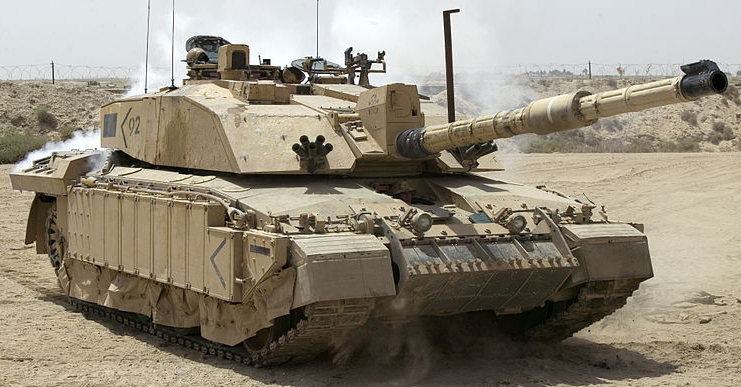
Challenger 2 outside Basra (Iraq), Operation Telic, 2008.
Afghanistan
UK was also part of the new coalition that took on to invade Iraq to expel Saddam Hussein from power on assumptions of large "mass destruction weapons" stockpiles hidden from the UN inspection teams. Whatever the reason, it gave the opportunity to the British 1st armored division once again to test its metal, in particular, the newly introduced the Challenger 2 main battle tank...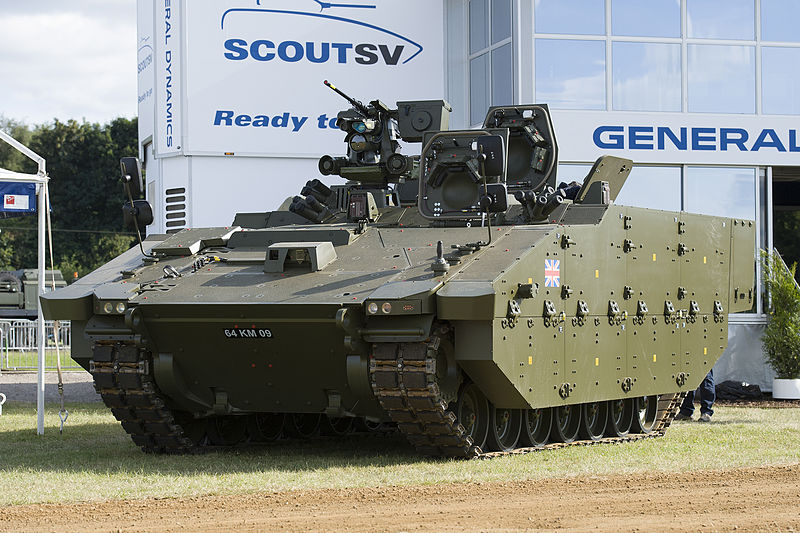
The FRES Scout SV is a new family of tracked specialized vehicle that is replacing the Saxon, FV432 and CVR(T).
Future plans for the Royal Armoured Corps
For main battle tanks, only upgrades for the Challenger 2 are Planned. No new model is known being studied. Upgrades also concerned the Warrior IFV, while the old CRV(T) series built by Alvis in the 1970-1980s are scheduled for replacement. However, the FV430 series IFV, are currently completely overhauled and improved with better engines and armor, renamed FV430 Mk.3 Bulldog (2006).However, efforts have been put into smaller size AFVs. One of the most promising is the Future Rapid Effect System. This is a family of medium-weight armored vehicles intended to replace the Saxon, FV432 and CVR(T). Eventually, the FRES Scout SV and variants took over, while the ABSV is planning to replace mortar carriers.
The MAN Support vehicle, a £1.3Bn Support Vehicle (SV) procurement program, is aimed at giving the Army's logistical corps backbone some 7,285 new trucks and utility vehicles, all based on a common platform for better cost efficiency. This fleet, later reduced to 6,800 includes 288 recovery vehicles and 69 recovery trailers. The first already entered service since 2014.
Long-term vision includes the Future Integrated Soldier Technology infantrymen suite, part of the Future Soldier programme, the Vitrus advanced body armor, and unmanned "Future Protected Vehicle concept".


Two of the British Army's latest Armored Engineering Vehicles. The Trojan (top) and the Terrier Below. These photos were taken at Tankfest 2018, at teh Bovington Tank Museum, by Mark Nash.
Links
Main article about the British Army (wikipedia)Modern equipments of the British Army
Official website
Modern British AFVs, in detail

Challenger 1 (1982)These MBT participated in the 1st gulf war and were in operation in Bosnia and Kosovo (IFOR/KFOR). Now all passed onto Jordanian service. Some derived specialized variants, however, are kept in service with the British Army.

Challenger 2 (1997) British actual main battle tank. (ill.: Challenger 2 TES, Basra, Iraq 2008). 446 were built total and are in service, but 38 more Challenger 2E were sold to Oman. They had been in action in Iraq and Afghanistan for years, but also in Kosovo.
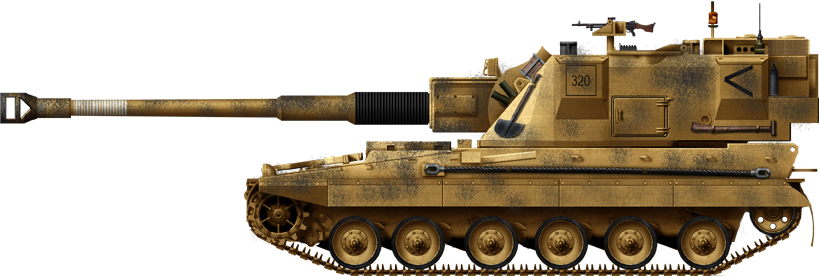
AS-90 Braveheart (1992)117 of these self-propelled howitzers are in service, backed by 50 GMLRS (US-built) Multiple Rocket Launching vehicles.

FV-510 Warrior (1988)Over 780 are in service today in six series. The bulk are 582 IFVs, followed by 84 Armoured command vehicles (FV-511), 105 Armoured repair vehicles (FV-512), 39 Armoured recovery vehicles (FV-513), 52 Artillery observation vehicles (FV-514) and 19 Artillery command vehicles (FV-515).
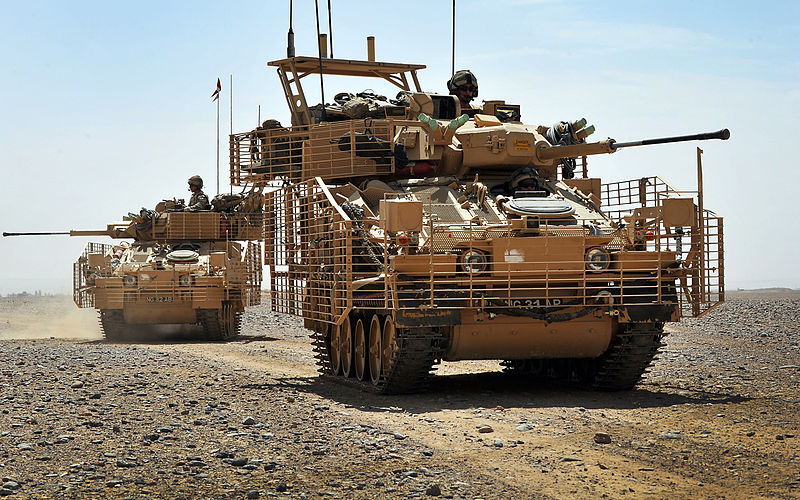
CRV(T)The Combat Vehicle Reconnaissance (Tracked) are the standard light tanks and specialized vehicles built by Alvis in the 1970s (592) now ageing and modernized or pending replacement. The family comprises the FV107 Scimitar (recce), FV103 Spartan (APC), FV104 Samaritan (medevac), FV105 Sultan (command), and FV106 Samson (ARV).
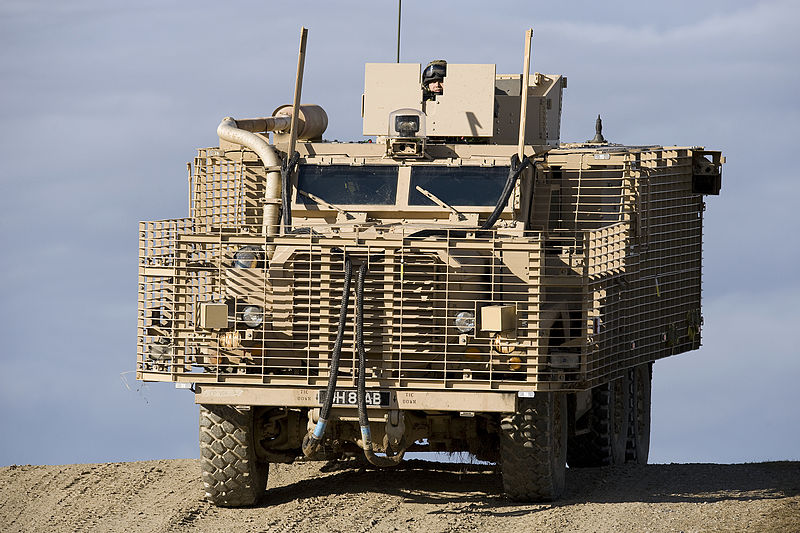
Protected Mobility Vehicles (PMVs)These were built for the post-invasion service in Iraq and Afghanistan. They are all MPV/MRAPs (mine/IED protected). These are 450 Mastiff (photos), 171 Ridgback, 125 Wolfhound and also 30 US-leased Cougars. The first three are British Conversions of the Force Protection Inc. Cougars. There are also 400 lighter, British built Foxhounds, and 578 Jackal MWMIK Coyote in two versions. 19 Buffalo were also leased to deal with mine as well as 13 British JCB HMEE (militarized bulldozers). Also 338 Husky MPVs were obtained from the USA.
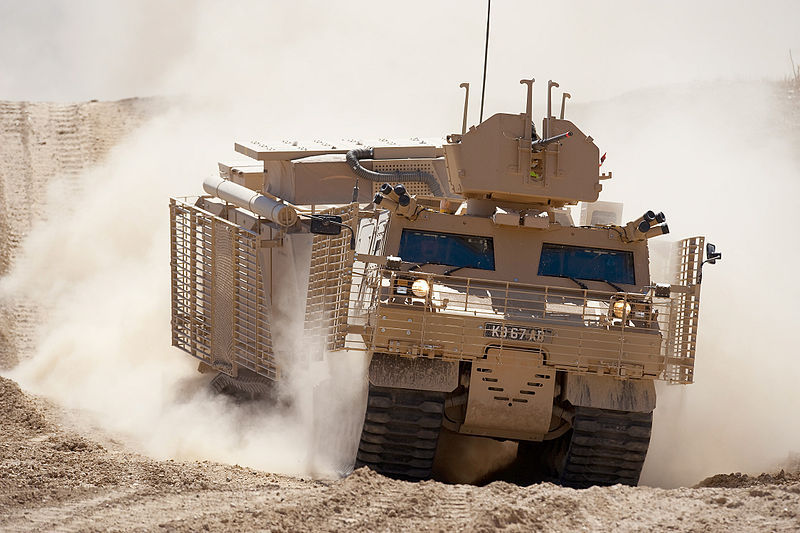
Warthog ATPMArticulated vehicles like 19 Vikings (well suited for deep snow) are provided for UAV support as well as some 115 Indonesian-built Warthogs.
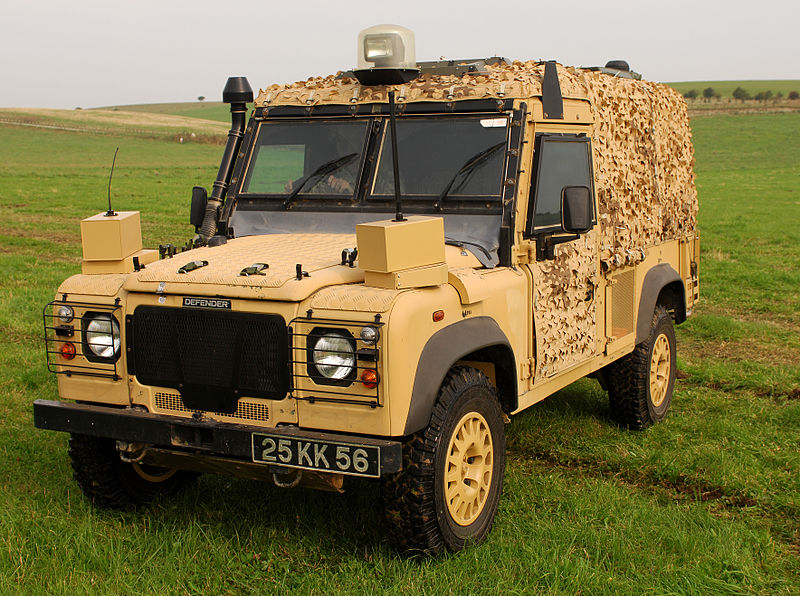
Land Rover Light Vehicles868 total, comprising 371 recce RWMIK, 485 Snatch (patrol) and 12 unmanned C-IED Panama used with Talisman convoys. Other patrol vehicles include the 6x6 Vector (joint production with Austria), of which 153 vehicles were delivered. Other protected 4x4s were purchased in Italy, 400 Panther command & control vehicles.
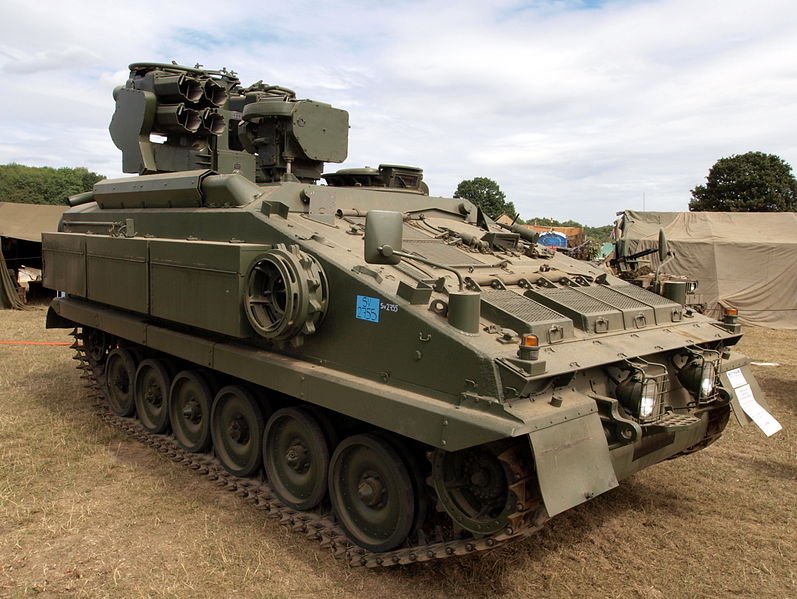
BAE StormerThis family of specialized vehicles comprised 62 Starstreak HVM SPAAML (22 more in storage), but also 29 "flatbed" versions with the Shielder minelaying system. The Stormer 30 recce (also based on the same chassis) vehicle is currently in final development phase to replace the CRV(T) family.
_Bonvington.jpg)
CRARRVArmoured recovery vehicles based on the Challenger 1 chassis. 72 in service. Based on the Challenger 2 are also 33 Titan AVLB and 33 Trojan AVRE bridgelayers, 137 Alvis Unipower TBT (truck bridgelayers), and 60 Terrier CEVs.
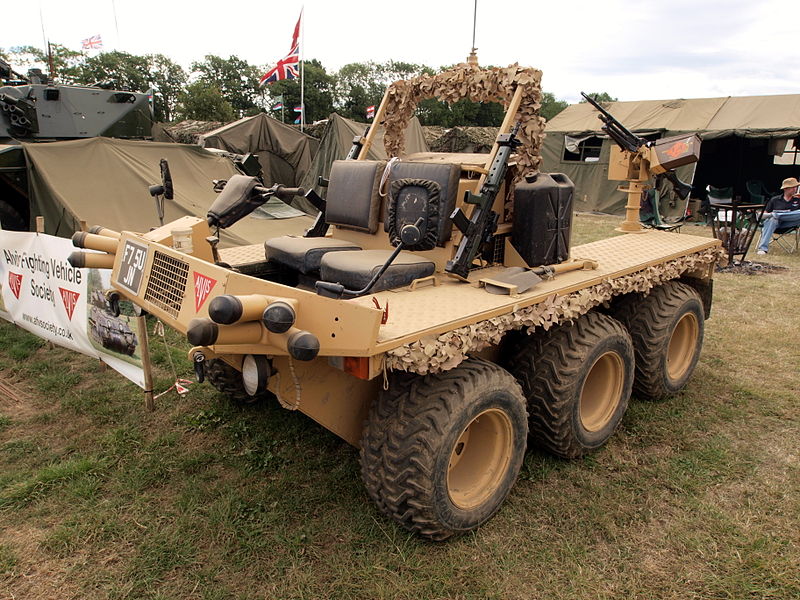
SUPACAT ATMAlso developed by Alvis for special operations in Iraq and Afghanistan were lightweight, ultra-fast airborne vehicles and capable to carry height equipped infantrymen. Other, even lighter vehicles looking more tailored for entertainment than war are also in service like the Springer 4x2, and the Grizzly 450 Quads used by the SAS.
The ground forces also had their own aircraft branch, comprising 50 Westland Apache attack helicopters, 42 Westland Lynx and Wildcat utility helicopters, 8 Bell 212 HP, 5 Eurocopter AS365N3 Dauphin II (special forces), and 34 Westland Gazelle AH1 (recce).

Modern Tanks
Modern MBTs posters

Denel Bagder (2018)

Type 16 MCV (2016)

Gepard 1A2 last rounds 2011

SANDF

Russian AFVs

Main Battle Tanks